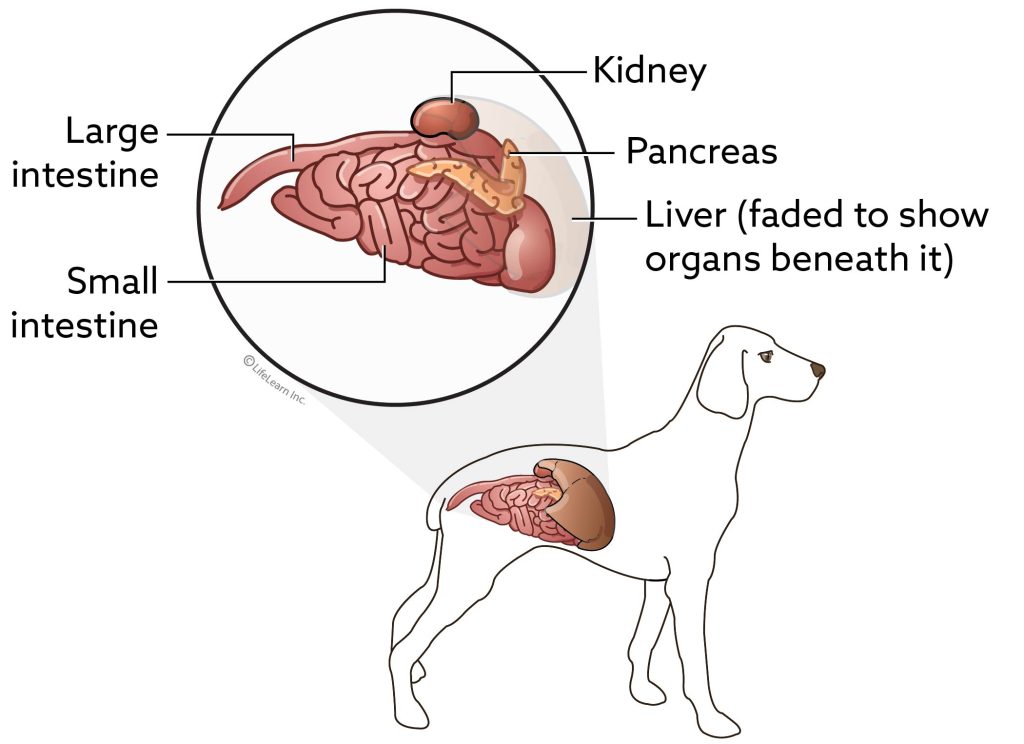Pancreatitis in dogs is a potentially serious condition that can appear suddenly or develop over time. At our clinic, we believe that informed pet owners are empowered to make the best choices for their furry companions. This guide will help you understand the key facts about canine pancreatitis, including how to recognize it, what causes it, and how it can be treated or prevented.
What Is Canine Pancreatitis?
Pancreatitis refers to inflammation of the pancreas, a vital organ near the stomach that aids in both digestion and blood sugar regulation (via insulin production). When inflamed, the pancreas may begin to digest itself with its own enzymes, leading to a cascade of painful and potentially dangerous symptoms.
Types of Pancreatitis
- Acute Pancreatitis
A sudden onset of inflammation, which can be severe or even life-threatening. It may occur once or multiple times. - Chronic Pancreatitis
A long-term, ongoing inflammation that may result in permanent damage to the pancreas over time.
Common Causes of Pancreatitis
Pancreatitis can be triggered by a range of factors, including:
- Diet: High-fat foods or sudden changes in diet
- Obesity: Overweight dogs are at higher risk
- Medications: Certain drugs like corticosteroids may contribute
- Genetics: Breeds like Miniature Schnauzers are more prone
- Underlying Health Conditions: Diabetes, hypothyroidism, and other metabolic diseases
Symptoms to Watch For
Symptoms can vary in intensity, but common signs include:
- Vomiting
- Diarrhoea
- Abdominal pain (often shown by a hunched posture or reluctance to move)
- Loss of appetite
- Lethargy
- Fever
- Dehydration
- Elevated heart rate
How Is It Diagnosed?
Diagnosing pancreatitis involves a combination of clinical assessment and diagnostic testing:
- Physical Examination: Checking for pain and systemic symptoms
- Blood Work: Evaluating enzyme levels and inflammatory markers
- Ultrasound Imaging: To detect pancreatic swelling or abnormalities
- X-rays: Used to rule out other causes of gastrointestinal symptoms
Treatment Options
Pancreatitis treatment typically requires hospitalization, especially in acute cases. Treatment may include:
- IV Fluids: To correct dehydration and support circulation
- Pain Relief: Pancreatitis is painful, and managing discomfort is critical
- Anti-Nausea Medications: To reduce vomiting and improve appetite
- Nutritional Support: A low-fat, highly digestible diet is key. In many cases, early nutritional support helps speed recovery and promotes better outcomes
Preventing Pancreatitis
While not all cases are preventable, these steps can reduce your dog’s risk:
- Balanced Diet: Stick to vet-approved, low-fat dog food
- Weight Management: Maintain a healthy weight through regular exercise and proper feeding
- Avoid Table Scraps: Especially rich, fatty, or greasy human foods
- Routine Vet Visits: Regular check-ups help detect underlying conditions early
In Summary
Canine pancreatitis is a condition that should never be ignored. Early recognition and prompt treatment can make a critical difference in your dog’s recovery and long-term wellbeing.
If you suspect your dog may have pancreatitis, or if you’d like guidance on prevention and nutrition, we’re here to help. Contact our clinic today to schedule an appointment or speak with one of our veterinarians.


